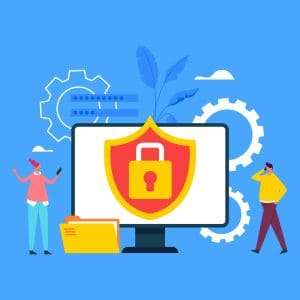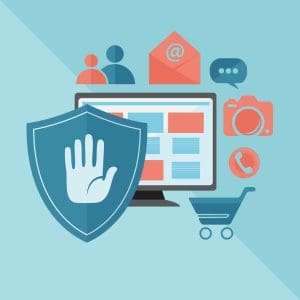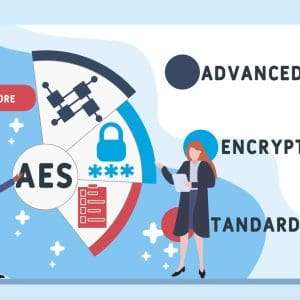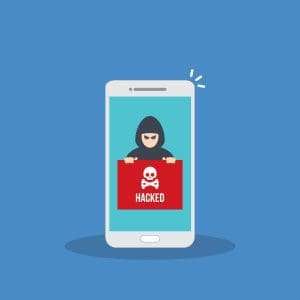Today’s world is interconnected and the rise of the global. Remote workforce over the few years transformed the way businesses operate. The shifts to remote work are becoming more prevalent. It’s crucial to address the cybersecurity risks that accompany this new working model. Protecting sensitive data and mitigating potential threats by fortifying security is paramount in safeguarding both remote workers and the businesses they represent. You also have to learn certain cybersecurity tips in fortifying your security on the Internet.
Today, we’re talking about ways you can fortify your cybersecurity. Even if your workforce is spread out across different countries and continents. We’ll provide you with 11 essential cybersecurity tips specifically designed for remote workers. Whether you’re an employee navigating the digital landscape or an employer responsible for ensuring the security of your distributed workforce, these tips will equip you with the knowledge and tools necessary to enhance your cybersecurity defenses.
As the boundaries between personal and professional spheres blur, the need to prioritize cybersecurity has never been more critical. By adopting the following cybersecurity best practices, remote workers can confidently navigate the digital landscape. This is while minimizing potential risks and vulnerabilities.
Greatest Cybersecurity Risks for Remote Companies in 2023

The rapid shift towards remote work has also exposed them to a myriad of cybersecurity risks. The rapid shift towards remote work in recent years has opened up new opportunities for businesses. But it has also exposed them to a myriad of cybersecurity risks. As remote work continues to dominate the global landscape, it’s crucial for companies to understand and address these risks head-on. Furthermore, by identifying and mitigating the greatest cybersecurity threats, businesses can ensure the safety of their remote workforce and protect sensitive data from malicious actors.
Here are some of the most pressing cybersecurity risks faced by remote companies in 2023:
- Phishing Attacks: With the rise of remote work, phishing attacks have become increasingly prevalent. Cybercriminals often target unsuspecting remote employees through deceptive emails. They aim to trick them into revealing sensitive information or downloading malicious software. According to the FBI’s 2023 ICE Report, phishing attacks were responsible for a total of $52 million in 2022. To also combat this risk, remote workers should receive regular cybersecurity training that educates them on identifying and avoiding phishing attempts.
- Ransomware Attacks: Remote companies are also at a heightened risk of falling victim to ransomware attacks. These attacks involve hackers gaining unauthorized access to a company’s systems and encrypting its data. Then, demanding a ransom for its release. Statistics from the 2022 Verizon Data Breach Investigations Report (DBIR) report indicate that ransomware attacks increased by 13% between 2020 and 2021. This is a bigger jump than the previous five years combined. To protect against ransomware, remote companies should implement robust security measures. This includes regular data backups and employee education on safe browsing habits.
More Cybersecurity Risks for Remote Companies in 2023
- Insider Threats: Managing insider threats becomes more challenging in a remote work environment. Employees with access to sensitive information can intentionally or unintentionally cause data breaches. According to the 2022 IBM Cost of a Data Breach Report, insider incidents accounted for over $4 million of lost revenue. Remote companies should establish clear security protocols. Also, conduct thorough background checks, and provide ongoing cybersecurity training to mitigate the risk of insider threats.
- Insecure Wi-Fi Networks: Remote workers often rely on their home Wi-Fi networks, which can be vulnerable to attacks. Moreover, public Wi-Fi networks pose an even greater risk, as they are often unsecured and can be easily exploited by hackers. Statistics on Wi-Fi-related security incidents highlight the need for caution in connecting to public networks. Remote companies should encourage employees to use secure and encrypted connections. For instance, Virtual Private Networks (VPNs) when accessing company resources remotely.
By understanding and proactively addressing these cybersecurity risks, remote companies can fortify their defenses and protect their valuable assets. Equally important, implementing comprehensive security measures, conducting regular employee training, and staying updated with the latest security patches are essential steps in creating a robust cybersecurity framework for a remote workforce. Moreover, safeguarding remote workers and their digital environments is an ongoing effort that requires vigilance and a commitment to staying one step ahead of evolving threats.
11 Cybersecurity Tips for Enhancing Remote Workforce Protection
1. Implement a Secure VPN: Safeguarding Remote Connections

One of the essential cybersecurity tips is implementing a secure VPN.
One of the essential cybersecurity tips is implementing a secure VPN. In a remote work landscape, establishing a secure connection is paramount to protect both remote employees and the business from potential cyber threats. By implementing a Virtual Private Network (VPN), remote workers can create an encrypted tunnel between their devices and the company’s network, shielding sensitive data from prying eyes. A reliable VPN solution ensures that remote workers can access company resources securely, even when connecting through public Wi-Fi networks. When selecting and configuring a secure VPN, prioritize features like strong encryption protocols. Also, automatic kill switches, and robust authentication mechanisms to fortify your remote workforce’s connections.
2. Enable Mobile Device Encryption: Shielding Sensitive Data on the Go

Enabling mobile device encryption becomes crucial to protect sensitive data from unauthorized access.
One more important part of the cybersecurity tips is enabling mobile devices with encryption. In addition, with the increased issuance of work devices to remote employees, enabling mobile device encryption becomes crucial to protect sensitive data from unauthorized access. Also, encrypting mobile devices ensures that if a device is lost or stolen, the data stored on it remains secure. Remote workers should enable encryption on their mobile devices. This includes smartphones and tablets, using the built-in encryption features available on various platforms. By doing so, they create an additional layer of protection, mitigating the risk of data breaches and maintaining the confidentiality of company information.
3. Implement Multi-Factor Authentication (MFA): Strengthening Access Controls
Another important component of cybersecurity tips is implementing multi-factor authentication. To add an extra layer of security and prevent unauthorized access to remote systems, implementing Multi-Factor Authentication (MFA) is vital. MFA requires remote workers to provide multiple pieces of evidence to verify their identities, significantly reducing the risk of compromised accounts. Whether accessing email, cloud platforms, or critical applications, remote workers should be encouraged to enable and use MFA. Recommend utilizing authentication factors such as something the user knows (e.g., a password), something the user has (e.g., a fingerprint or hardware token), or something the user is (e.g., biometric data) to establish strong access controls.
4. Conduct Regular Cybersecurity Employee Training: Building a Security-Conscious Culture
Creating a security-conscious culture among remote employees is crucial to combat evolving cyber threats. Furthermore, conduct regular cybersecurity training programs to raise awareness and promote best practices. Cover key topics like identifying and avoiding phishing attacks, ensuring strong password hygiene, securing devices, and practicing safe browsing habits. Empowering remote workers with the knowledge and skills to navigate the digital landscape securely is an investment that pays dividends in protecting your organization.
5. Secure Email Communications with Microsoft Defender for Office 365: Strengthening Email Defenses
Strengthening email defenses is one more element of cybersecurity tips. Email remains a primary target for cyberattacks, with a significant percentage of breaches originating from malicious emails. To also bolster email security, use tools like Microsoft Defender for Office 365. This robust solution scans emails for potential threats, including phishing attempts, malicious attachments, and suspicious links. By implementing advanced email security measures, you can better protect remote workers from email-borne cyber threats and reduce the risk of successful attacks.
6. Implement Web Filtering Solutions: Safeguarding Against Malicious Websites
Web filtering solutions play a vital role in reducing the likelihood of remote employees accessing malicious websites and falling victim to cyber-attacks. By blocking potentially harmful content, web filtering solutions provide an additional layer of protection against online threats. Remote companies should consider deploying web filtering tools that allow granular control over website access, ensuring that employees can browse the internet safely while minimizing the risk of malware infections and data breaches.
7. Protect Company Data on Cloud Platforms: Safely Migrating to the Cloud
As remote companies increasingly rely on cloud platforms like Office 365 and SharePoint, protecting company data during migration becomes paramount. Secure sharing practices like encrypting sensitive data, implementing access controls, and providing user training on data handling, are crucial in safeguarding information stored in the cloud. By adopting a multi-layered approach to cloud security, remote companies can maximize the benefits of cloud platforms while minimizing the risk of data breaches and unauthorized access.
8. Avoid Using USB Sticks: Secure File Transfer Alternatives
Educate remote employees about the risks associated with using USB sticks to transfer data between personal and work devices. USB sticks can introduce viruses or malware from personal devices to company machines, compromising security. Encourage the use of alternative secure file transfer methods. For instance, cloud storage, encrypted email attachments, or secure file transfer protocols (SFTP), to mitigate the risk of data breaches and maintain the integrity of sensitive information.
9. Keep Devices Up to Date with Security Patches: Minimizing Vulnerabilities
Regularly updating devices with security patches is vital to minimize vulnerabilities and protect against known exploits, according to Forbes. Remote workers should promptly apply software updates on their devices, including operating systems, applications, and security software. By staying current with the latest security patches, you can close potential security gaps and mitigate the risk of cyberattacks targeting outdated software.
10. Monitor Shadow IT Usage: Mitigating Security Risks
The use of unapproved platforms or software (Shadow IT) poses significant security risks for remote companies. Moreover, without proper oversight, remote employees may inadvertently introduce vulnerabilities into the organization’s network. Implement monitoring and establish security compliance measures to detect and mitigate potential security risks caused by Shadow IT. By addressing unauthorized software usage promptly and providing secure alternatives, you can maintain a more robust and secure remote work environment.
11. Establish a Reporting System for Security Issues: Encouraging Active Involvement

Establishing a reporting system empowers remote employees to promptly report security breaches or incidents they encounter.
Establishing a reporting system empowers remote employees to promptly report security breaches or incidents they encounter. By encouraging active involvement, you create a culture where security issues are addressed swiftly, minimizing potential damage. Implement a confidential reporting mechanism that allows remote workers to report suspicious activities, phishing attempts, or other security concerns. Promptly investigating and responding to reported incidents helps maintain a proactive approach to cybersecurity. You can also ensure the safety of your remote workforce and protect critical assets.
By following these 11 essential tips for enhancing cybersecurity protections, remote companies can proactively strengthen their defenses, mitigate risks, and empower their remote workforce to navigate the digital landscape securely. Prioritizing cybersecurity measures tailored to the specific needs of remote work environments is instrumental in safeguarding valuable assets and maintaining business continuity.
Final Thoughts
Prioritizing cybersecurity is paramount for the protection of both remote employees and the organizations they work for. This article has highlighted essential cybersecurity tips to enhance the security posture of remote companies. By implementing a secure VPN, enabling mobile device encryption, and utilizing multi-factor authentication, remote workers can establish secure connections, safeguard sensitive data, and strengthen access controls. Conducting regular cybersecurity employee training can further empower remote employees with the knowledge and skills to navigate the digital landscape securely.
As remote work becomes increasingly prevalent, the risks associated with cyber threats continue to grow. Also, phishing attacks, ransomware incidents, insider threats, and insecure Wi-Fi networks pose significant risks to remote companies. By raising awareness of these risks and implementing proactive measures, remote companies can stay ahead of cyber threats and protect their valuable assets.
PEOs like BrightR Limited offer valuable support to international companies expanding into Canada by providing comprehensive cybersecurity employee training programs. These programs cover critical topics such as phishing awareness, password security, device security, and safe browsing practices. By partnering with PEOs, remote companies can access expert resources and training materials, ensuring that their remote workforce is equipped with the necessary knowledge to identify and mitigate common cybersecurity threats.
Safeguarding the cybersecurity of remote companies is an ongoing endeavor that requires a proactive approach. By implementing the recommended cybersecurity tips, organizations can fortify their defenses, protect sensitive data, and promote a security-conscious culture among remote employees. Also, with the support of PEOs like BrightR Limited, international companies expanding into Canada can access comprehensive cybersecurity training programs tailored to their specific needs, ensuring a robust and secure remote work environment.
Safeguard Your Organization Today
To ensure your remote workforce is equipped with the knowledge and skills to enhance cybersecurity, consider exploring BrightR Limited’s comprehensive cybersecurity training materials and services. With their expertise in supporting international companies expanding into Canada, BrightR Limited can provide you with the necessary resources to create a well-rounded cybersecurity training program tailored to your specific needs. We will give you more cybersecurity tips if you reach out to us.
By partnering with BrightR Limited, you can access different training materials. We offer critical topics such as phishing awareness, password security, device security, and safe browsing practices. Our cybersecurity training programs empower remote employees to identify and mitigate common threats, fostering a security-conscious culture within your organization.
Take a proactive step towards enhancing the cybersecurity protections for your remote workforce today.




